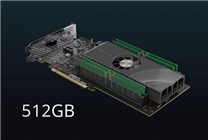NVIDIA Dominates the Graphics Card Market in Q2 2025
Summary:
- NVIDIA’s market share in the discrete graphics card sector skyrocketed to 94% in Q2 2025, marking a 2.1% increase from the previous quarter.
- AMD saw its share dip to 6%, while Intel remained stagnant at 0%.
- Overall shipments of discrete graphics cards rose by 27%, indicating a thriving market despite economic uncertainty.
The latest GPU market report, released by Jon Peddie Research, reveals that NVIDIA has solidified its leadership in the discrete graphics card market during the second quarter of 2025. With an unprecedented market share of 94%, NVIDIA’s dominance illustrates a significant upward trend, growing by 2.1% compared to the first quarter of 2025. In stark contrast, AMD’s market share has dwindled to just 6%, and Intel continues to hold a negligible 0%.
Significant Market Growth
The total shipments of discrete graphics cards experienced a remarkable surge of 27% compared to the previous quarter. This growth underscores the market’s increasing reliance on high-performance graphics solutions, particularly in gaming and professional applications. In addition, shipments of data center GPUs rose by 4.7%, highlighting the growing demand for graphical processing capabilities in enterprise environments.
Future Trends and Projections
Looking ahead, the report forecasts a compound annual growth rate (CAGR) of -5.4% for discrete graphics cards from 2024 to 2028. Despite this, the projected installation base for discrete graphics cards is expected to soar to 163 million units within the next five years, with a staggering 87% of desktop PCs predicted to be equipped with dedicated graphics. This indicates that while annual growth may be declining, the overall importance and integration of discrete GPUs in consumer setups will persist robustly.
Economic Influences on Pricing
The report also sheds light on the ramifications of the United States’ recent tariff policies. These tariffs have caused fluctuations in pricing, particularly for high-end graphics cards, thus inciting a sense of urgency among consumers. While entry-level and mid-range graphics cards remain relatively affordable, the inconsistency in tariff implementation across different regions prompts buyers to act swiftly when prices are favorable.
As of Q2 2025, the overall installation rate of discrete graphics cards in desktop PCs reached an impressive 154%, reflecting a 2.3% increase from the previous quarter. However, the desktop PC CPU market is witnessing a decline, dropping 4.4% year-over-year and 21.6% month-over-month. This juxtaposition highlights a possible shift in consumer preferences, favoring enhanced graphical performance in their systems.
Conclusion
In conclusion, NVIDIA’s overtaking of the discrete graphics card market is a pivotal moment, underlining its technical prowess and market strategy. The data indicates a market hungry for high-quality graphics, and NVIDIA’s continuous improvement positions it well for future growth, despite any economic headwinds.
As this competitive landscape evolves, it will be crucial for consumers to stay informed about pricing trends and product availability, particularly in light of tariffs and economic changes impacting the tech industry.
By understanding these dynamics, consumers, businesses, and industry stakeholders can better navigate the complexities of the graphics card market in the coming years.






